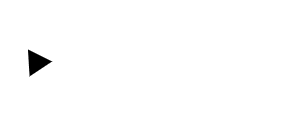Last Updated: April 2024
You have to admit it – Colors play an important role when it comes to branding and marketing.
Why? Because of the correlation between the psychology of color and persuasion. And understanding color psychology can be vital for marketers to drive desired responses from the consumers.
But most of today’s marketing conversations on colors and persuasion are based on anecdotal evidence, and advertisers’ own perception of “colors and mind”.
In this post, we will take the edge off this trend and share some factual data on color psychology and persuasion collected from a selection of the most reliable research on color psychology.
But before that let’s know why there are misconceptions about color psychology?
Misconceptions around the psychology of color
As per research, misconceptions about colors are likely because of the elements – personal preference, experiences, context, beliefs, and cultural differences. These elements often suppress the effect that individual colors have on us.
So, if you consider yellow as an irrelevant color for branding, you should take a look at the statistics below.
Now, let’s take a look at some research-backed insights that indicate how colors play a key role in persuasion, and their importance in marketing and branding.
The Importance Of Colors In Branding
Choosing the right colors in branding can be crucial to driving the desired response from people.
There have been many attempts to classify consumer responses to the individual colors:
But colors are often perceived based on personal experiences and preferences. Still, if we look at these color perceptions, we can identify broader patterns that can help drive consumer response.
Now, let’s take a look at factual data that prove why colors are important in branding.
Also read: 13 Best Influencer Marketing Agencies You Need To Know!
Color can influence consumer purchasing decisions.
A study called the impact of colors in marketing indicates that 90% of snap judgments or perceptions made by consumers about products can be based on colors alone (depending on the product).
Furthermore, Exciting Red and Competent Blue also indicate that purchasing intent is significantly influenced by colors as a result of the impact they have on consumers’ perception of a brand.
So, if your business is not getting expected sales, maybe you’re not using the right colors in your branding.
The human brain prefers recognizable brands.
Additional studies have revealed that our brains prefer recognizable brands, which makes colors incredibly important when creating a brand identity.
So, as a brand marketer, it seems crucial for you to use colors in the brand’s logo that ensure differentiation from your competitors. For example, if your competitor uses red, you can stand out by using a different color say blue.
Color appropriateness in relation to the product.
When it comes to picking the “right” color, research has found that predicting consumer reaction to color appropriateness in relation to the product is far more important than the individual color itself.
In simple words, brand or product color should define what consumers like, prefer, and stand for.
So, if Harley owners buy vehicles in order to feel rugged, you could assume that the pink + glitter edition wouldn’t sell all that well.
Colors influence consumers’ perception of a brand.
Additional research has shown that there is a real correlation between the use of colors and customers’ perceptions of a brand’s personality.
It is believed that every color broadly represents specific traits. For example, brown represents ruggedness, blue represents safety, purple represents sophistication, and red aligns with excitement.
But most academic studies on color and branding conclude that it’s far more crucial for branding colors to represent the personality of the brand instead of trying to align with stereotypical color perceptions.
So, as a marketer, you shouldn’t choose colors for branding based on such broad statements, rather color selection should be based on context and it should complement the personality of the brand.
Let’s consider the inaccuracy of making broader statements such as “brown means rugged.” The context is missing here, brown can also be used to create a warm, inviting feeling, or to stir your appetite.
Color Preferences By Gender
Color preferences can also vary by gender. One of the best studies on this topic is Joe Hallock’s Colour Assignment.
As per the study, people’s preference for a specific color can be related to how they feel in any situation, how they want to feel, and even how they remember certain experiences in their life.
Below are Hallock’s findings for the most and least favorite color of men and women:
And these are some key insights that marketers should consider in branding:
- Blue is the most favorite color across both genders. The largest proportion – 57% of men chose blue as their most favorite color, and also the largest proportion – 35% of women chose blue as their favorite color.
- The disparity between groups on purple. While a significant proportion of women – 24% of women reported purple as their favorite color, NO MEN said that purple is their favorite color.
- Green is equally liked. An equal proportion of men and women – 14% reported that green is their favorite color.
- They don’t like orange and brown. When it comes to the least favorite color, the largest majority – 33% of women chose orange, and also a notable proportion of men – 22% reported orange as their least favorite color. Brown is also not much of a preference, 27% of men and 20% of women chose orange as their least favorite color.
Some additional research studies on color preferences show that when it comes to shades, tints, and hues, men seem to prefer bold colors while women seem to prefer softer colors.
Furthermore, the studies also indicate that men prefer shades of colors (with black added to colors), and women prefer tints of colors (with while added to colors).
Image credit: KISSmetrics
So, considering color preferences as per the gender of consumers can be a key to successful branding or marketing campaign.
Color Coordination + Conversion Rate
Color and CTA
Another fact that makes it crucial for marketers to understand color psychology is that colors can influence the conversion rate. Using the right color combination on websites can significantly boost the conversion rate.
So, which color should you use to get the best conversions? Well, there is no single best color for conversions.
The psychological principle known as the Isolation Effect states that an item that “stands out like a sore thumb” is more likely to be remembered. The research states that people recognize and recall a CTA far better (be it text, image, or button) when it blatantly stands out from its surroundings.
Below is the snapshot of a landing page, a great example of good color coordination:
In the above image, the CTA (sign-up button) stands out because it’s like a red “island” in a blue ocean).
While using a color combination on websites by which CTA stands out can be vital for getting high conversions, using color patterns with similar hues and a vibrant accent can also be important for a website.
Hierarchy Of Colors In Website
A study named Aesthetic Response to Color Combinations states that while consumers prefer color patterns with similar hues, they also favor palettes with a highly contrasting accent color.
In terms of color coordination (as explained in this infographic by KissMetrics), a visual website structure should be made up of base analogous colors and a complimentary high contrasting color as an accent.
In simple words, use background, base, and accent colors to create a hierarchy on your site that makes it easy for customers to recognize a color that means action.
For better understanding, take a look at the image below:
Image credit: StudioPress
After reading this section, you might be feeling like an interior designer but it is incredibly important for you to understand the role of colors when it comes to getting the best conversions.
CTA: Red Beats Green
You might have heard of this – Red CTA button beats Green in terms of conversion.
The button change to red boosted conversions by 21%. Does that mean, red is the best color to use as CTA? Not exactly.
If you closely look at the image, you’ll see that the green palette has been already significantly used on the page. That’s why it blended with the other elements of the page. On the other hand, red is very rarely used on the page, helping the CTA to stand out from the surroundings of the page.
Let’s take a look at one more study published in Smashing Magazine that shows the importance of color coordination in conversions.
In this study, the publisher performed a multivariate test to identify which color combination could get more downloads for their PDFProducer program, and included 12 different color combinations for CTA:
Here also, color coordination and size played a key role. Example #10 achieved the maximum conversion rate at 63.2%, while the default CTA got lesser conversions at 39%.
The reason behind these results is the same – CTA stands out from its surroundings. If you noticed CTA #10, the PDFProducer text is small and grey in color as default, but the CTA (action text) – “Download for Free” is large and red, creating a good color contrast that resulted in high conversions.
You’ll notice that the PDFProducer text is small and light gray in color, but the action text – “Download for Free” is large and red, creating the contrast needed for high conversions.
So the takeaway here is that the isolation effect should be taken into consideration while choosing colors for branding or a website. The color coordination should be such that the CTA can appeal and differentiate itself from its surroundings.
Why Do People Like “Mocha” But Not “Brown?”
While people perceive colors by looking at them, they also perceive a color based on its name!
As per research by Online Wiley Library, people prefer colors with “fancy” names.
In the study, people were more likely to prefer ‘mocha’ than ‘brown’ – despite the fact that both colors were the same, only the names were different.
Additionally, another research also states that people find paint colors with elaboratory names more pleasing to the eye than those with simple names.
It doesn’t end here! Unique and unusual color names can also influence the consumers’ intent to purchase. For instance, jelly beans with names such as razzmatazz were more likely to be chosen than jelly beans names such as lemon yellow. This effect was also found in non-food items such as sweatshirts.
So, using creative, unique, and descriptive color names in branding and marketing can attract and influence consumer behavior, ultimately, giving a significant boost to the marketing efforts of a company.
Last Words
Color seems to be a key pillar rather than a part of marketing and branding. Colors appear to be so important that alone can make or break the marketing efforts of a company.
Using the right color combination can also significantly improve conversion rates for a brand or website.
In the case of website designing also, it seems important for web developers to keep the color hierarchy in their mind – they should focus on creating color coordination that makes it easier for the people to identify the action elements on the website.
So, marketers should definitely take time off to understand color psychology instead of making color decisions based on stereotypical broader statements or perceptions.









